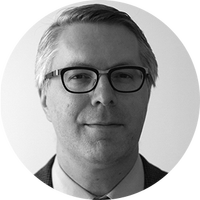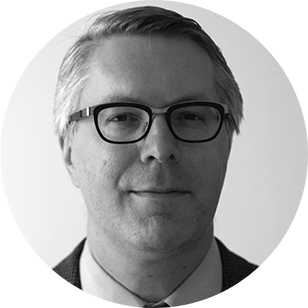How Donald Trump hypnotized America
It's easy, actually: Be funny. Be confident. Be a bully. Repeat, repeat, repeat. Close with the emotion. Win.


"I don't repeat myself. I don't repeat myself. ... I don't repeat myself."
Those are the immortal words of Donald Trump. He spoke them to Marco Rubio in the Feb. 25 GOP presidential debate. And because it's The Donald, you know that he used not only the exact same words but the exact same intonation all three times. (It's at the 7:30 mark in the video below.)

Almost anyone else on that stage would have been caught out saying something so immediately untrue. Not Slick Donald. Slick Donald is confident. Slick Donald is calm. Slick Donald knows exactly what he's doing.
The Week
Escape your echo chamber. Get the facts behind the news, plus analysis from multiple perspectives.

Sign up for The Week's Free Newsletters
From our morning news briefing to a weekly Good News Newsletter, get the best of The Week delivered directly to your inbox.
From our morning news briefing to a weekly Good News Newsletter, get the best of The Week delivered directly to your inbox.
And what he's doing is almost hypnotism. He's using repetition to create a stimulus-response effect and to make his simple ideas, labels, and attitudes stick. And he's making it work better by softening his audiences up for it. He knows that most people decide most of the time on feelings and then rationalize what they've decided. And you can bet that he's tested his approach on focus groups. He's a salesman, after all.
How does he soften the audience up for his repetition hypnosis? Humor. Bullying. Confidence. He doesn't tell jokes, not exactly, but he pulls faces, slips in parenthetical comments, and makes cracks at others' expense — for instance, when Megyn Kelly pointed out that he called women "fat pigs, dogs, slobs, and disgusting animals," he interrupted her to say "Only Rosie O'Donnell."

He gets people laughing, and that makes them feel positive and more receptive. More specifically, he gets them laughing at someone else's expense, and that makes them feel powerful. People say they hate bullies, but many are the people who will enjoy a vicarious experience of someone else bullying weaker, less respect-worthy people, be they Rosie O'Donnell or Jeb Bush. And Trump is confident. If caught out, he usually redirects the subject to a weakness of his opponent, or denies it, or brushes it off. He never, ever, at any time, acts like he's been caught out. He's shameless.
And then there's the repetition. There are three main varieties:
A free daily email with the biggest news stories of the day – and the best features from TheWeek.com
1. Trump uses the same words and phrases incessantly and identically. These aren't just any words and phrases: They have strong emotional valuation. Win. Great. Huge. Sad. Weak. Lame. Lyin' Ted. Crooked Hillary. Goofy Elizabeth Warren. Repeat a thing often enough and it burrows into the mind and becomes a given. Even if you disagree with it, it becomes the established idea that you're trying to disagree with.
Trump also uses the same sentence structures over and over and over. That's not so surprising; when you use a lot of short, easily repeated sentences, you tend to have simple declarative sentence structures. His opponents in the debates didn't do this because they didn't use a lot of short, simple sentences; they used complex and varied sentences.
They also used complex and varied intonation. Intonation is your guidepost to what kind of information you're getting and what kind you're going to get next. Listen to a complex sentence spoken by someone like Jeb Bush and you will hear, for example, the intonation going up to indicate another point coming, then down slightly to indicate a consideration of the point just made, then up from lower down to indicate a contrast, then down to make a further point, and then further down to conclude.
Donald Trump uses the same short intonation patterns over and over and over. He uses steady and ending upward, meaning, "Hold on, there's even more important stuff still coming" — like that raised index finger he likes to use; he uses upward and then stepping down slightly and holding level, meaning, "This, on the other hand..."; he uses a strong downward emphasis on the stressed syllable, meaning, "This is the fact, this is all there is to say about it." Together, they present a sense that he is consistent, conclusive, confident.
Take this example from the first debate: "Our leaders are stupid. Our politicians are stupid. And the Mexican government is much smarter, much sharper, much more cunning. And they send the bad ones over because they don't want to pay for 'em. They don't wanna take care of 'em. Why should they when the stupid leaders of the United States will do it for 'em." (It's at the 1:30 mark in the video below.)

You get identical downward stress on the two "stupid" sentences, identical upward-then-level on the three "much" statements, the two "they don't wanna" statements, and the "why should they," and finally a downward trend to conclude firmly. Even his intonation sends simple, clear, consistent, repeated messages.
2. Trump uses the same structures over and over and over to set up an automatic cue-response expectation. Trump's tweets often have a structure so clear it's become famous:
First he makes a declarative statement using insulting language. Then he expands on it. Then he caps it with a one-word evaluative summary.
Not all of his tweets follow that structure, of course. But it — or a close variation — shows up often enough that it's a routine as well structured as a joke. You can go along for the ride and you know the zinger you'll get at the end. It's not just a structural use of what psychologists call "repetition priming"; it also shows a savvy use of what linguists call "information structure": We tend to start sentences (especially simple declarative ones) with given information, then lead into the new and important information. So Trump slides Crooked Hillary or Lyin' Ted Cruz or Goofy Elizabeth Warren in at the very beginning, setting it up as established information — not even subject to question, just an accepted fact. And he loads emotionally charged evaluations at the end as the new key information.
He also often uses the tap-tap-bam: Use the same thing twice — the same structure and intonation with similar words — to set up an idea, and then punch home a new point with the third thing. This also uses repetition priming: The audience pays extra attention on the third point because they're conditioned to expect a big payoff after the tap-tap setup. Let's look again at that example: "Our leaders are stupid. Our politicians are stupid. And the Mexican government is much smarter, much sharper, much more cunning." And then he does it again right away: "And they send the bad ones over because they don't want to pay for 'em. They don't wanna take care of 'em. Why should they when the stupid leaders of the United States will do it for 'em."
The tap-tap-bam is a variation on a pattern that Trump seems to love more than anything. He knows it works. He knows it sells. He knows it sticks. Which brings us to...
3. Trump uses the rule of three. Say the same thing three times, use the same structure three times, make sets of three. The rule of three is used in jokes, in fairy tales, in religious texts, in fiction, in advertising, in speeches... everywhere, since at least the time of the Romans.
Trump makes sure his intonation is identical for all three items. Sometimes he says nearly the same thing three times: "a strong, good, hard look." "Building up our military, building up our strength, building up our borders." Sometimes he uses three related things: "waste, fraud, abuse." "China, Japan, Mexico." Sometimes he builds it up: "40, 50, 60." "People saw it. People liked it. People respected it."
Put these repetition tactics together and you get classic Donald statements like this one: "Millions and millions of people are going out to the polls and they're voting. They're voting out of enthusiasm. They're voting out of love. Some of these people, frankly, have never voted before — 50 years old, 60 years old, 70 years old — never voted before." The point, for Donald, is not the facts. He'll slot in the words he needs. The point is the pattern and the punch.
Does Donald Trump never vary his words? Does he never vary his sentences? Does he never vary his tone? Not never. You can get more varied sentences from him. Sometimes you can even get more varied intonation from him. But he plays his patterns, and he plays them often. He's a salesman selling his ultimate product: himself. And he knows that when he has softened them up, when he has cued them up, when he has clicked them into the pattern, he can finish with an emotionally charged payoff word for the take-home. Slick.
So there it is: How to hypnotize voters, in six simple moves. Be funny. Be confident. Be a bully. Repeat, repeat, repeat. Close with the emotion. Win.
James Harbeck is a professional word taster and sentence sommelier (an editor trained in linguistics). He is the author of the blog Sesquiotica and the book Songs of Love and Grammar.
-
 Why is the Pentagon taking over the military’s independent newspaper?
Why is the Pentagon taking over the military’s independent newspaper?Today’s Big Question Stars and Stripes is published by the Defense Department but is editorially independent
-
 How Mars influences Earth’s climate
How Mars influences Earth’s climateThe explainer A pull in the right direction
-
 ‘The science is clear’
‘The science is clear’Instant Opinion Opinion, comment and editorials of the day
-
 The billionaires’ wealth tax: a catastrophe for California?
The billionaires’ wealth tax: a catastrophe for California?Talking Point Peter Thiel and Larry Page preparing to change state residency
-
 Bari Weiss’ ‘60 Minutes’ scandal is about more than one report
Bari Weiss’ ‘60 Minutes’ scandal is about more than one reportIN THE SPOTLIGHT By blocking an approved segment on a controversial prison holding US deportees in El Salvador, the editor-in-chief of CBS News has become the main story
-
 Has Zohran Mamdani shown the Democrats how to win again?
Has Zohran Mamdani shown the Democrats how to win again?Today’s Big Question New York City mayoral election touted as victory for left-wing populists but moderate centrist wins elsewhere present more complex path for Democratic Party
-
 Millions turn out for anti-Trump ‘No Kings’ rallies
Millions turn out for anti-Trump ‘No Kings’ ralliesSpeed Read An estimated 7 million people participated, 2 million more than at the first ‘No Kings’ protest in June
-
 Ghislaine Maxwell: angling for a Trump pardon
Ghislaine Maxwell: angling for a Trump pardonTalking Point Convicted sex trafficker's testimony could shed new light on president's links to Jeffrey Epstein
-
 The last words and final moments of 40 presidents
The last words and final moments of 40 presidentsThe Explainer Some are eloquent quotes worthy of the holders of the highest office in the nation, and others... aren't
-
 The JFK files: the truth at last?
The JFK files: the truth at last?In The Spotlight More than 64,000 previously classified documents relating the 1963 assassination of John F. Kennedy have been released by the Trump administration
-
 'Seriously, not literally': how should the world take Donald Trump?
'Seriously, not literally': how should the world take Donald Trump?Today's big question White House rhetoric and reality look likely to become increasingly blurred
